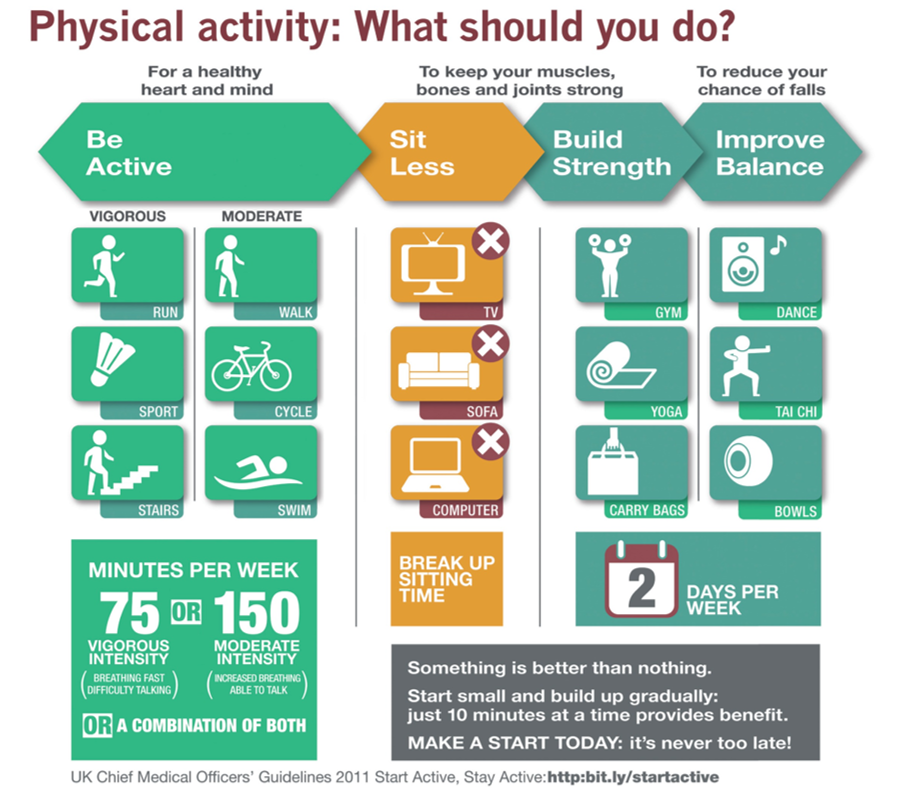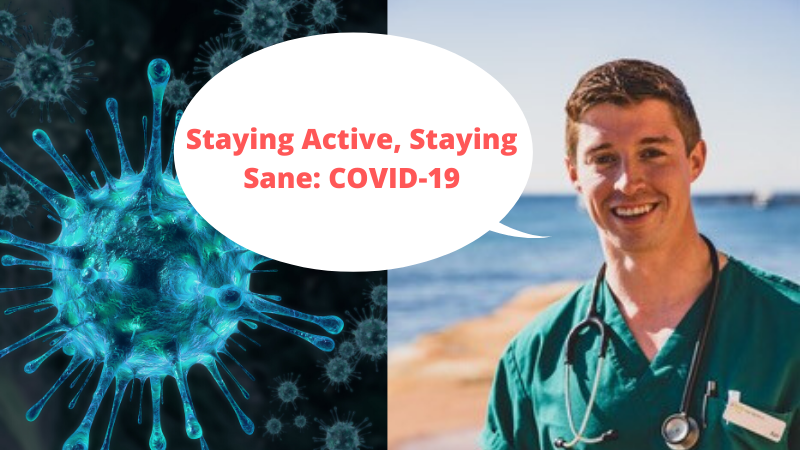Exercise-How much is enough?
So how do we know if we’re doing enough? A common question, but like any good thing, you can always do more. Recycle more, eat healthier, exercise more. In this article I’ll help show just how much is ‘enough’ and other facts about exercise volume.
What should you do?
There is a wonderful dose-response relationship between exercise and health outcomes. Put simply, no matter how stuck you’re feeling, injured, unwell, unhappy, you can take yourself for that brisk walk or book in an exercise class.
I appreciate that some of us need to know exactly how long that piece of string is though. For this the World Health Organisation saw you coming, and they’ve got answers, see their beautiful infogram below!

How do we measure physical activity? Importantly, what works for you?
We’re forever reading that we should be eating ‘this many calories’, we should move 10,000 steps, churning so many watts, and doing this type of training…no wonder we get caught up in a world of misinformation! Let’s find out what makes sense to you!
Calories or Joules
Calories and joules are both units of energy. Everything we do uses them! This will vary on how much we weigh and what our metabolic rate is, meaning that we’re always working on estimates.
Example: Approximately 600 calories or 2500 kilojoules burned from 60 minutes of vigorous-intensity circuit training.
Calories and Joules are useful as we can estimate how much we should be eating in a day and help with putting on or losing weight. Lots of diets are focussed on maintaining calorie deficits, remember low calorie is low energy eating.
Metabolic Equivalent of Task (MET)
One MET is the rate of energy used while sitting at rest (or 3.5ml of oxygen use per minute per kilogram body mass)
As a guide: standing quietly 1.5 METs, brisk walking 5.0 METs, weightlifting 6.0 METs, running 5:35min/km 11 METs
METs are rarely talked about in the public domain but in order to standardise research they’re used in lots of studies. My favourite being the BMJ systematic review that showed how risk of disease reduces with increasing METs per week!
Step Count
We’ve all heard of the 10,000-step goal and with the incorporation of pedometers into our phones and watches it’s something we can all aim for. Growing evidence shows the harm of being ‘sedentary’ above and beyond being ‘fit’. One can be ‘sedentary’ and ‘fit’! I think this is an important one – work on keeping that step count up and see if you can combine it with some exercise too.
Given the ease of measuring our steps this is one way to cut through the noise and get active.
Intensity
With the recognised challenge of defining intensity, people often refer to it as moderate-intensity or vigorous-intensity.
Moderate-intensity physical activity (approximately 3-6 METs) gives a noticeable increase in heart rate, you can feel yourself getting a little warmer but you’re still able to maintain conversation.
Vigorous-intensity physical activity (approximately >6 METs) causes rapid breathing, substantial increase in heart rate, sweating and inability to maintain conversation.
You can use this as a guide when you’re looking to do more, meet or beat the WHO guidelines on physical activity. If in doubt though, speak to your doctor, physiotherapist, exercise physiologist or personal trainer for tips on how you can get more active.
Too Much of a Good Thing?
We have to be honest and admit, there is such a thing as ‘too much exercise’. The truth is though if you’re using this as an excuse not to get active there are more important barriers to address.
Too much exercise comes about when you’re not recovering sufficiently between activities which can lead to injury. The most common cause of injury is however not overuse but lack of conditioning, poor technique or accidents (these are sadly unavoidable). As with everything in life, balance is key, if your exercise is taking a toll on your body then ask whether your nutrition and recovery are supporting your training.
Access to healthy and tasty meals when your body needs it can be tricky particularly with our busy lifestyles. I find locally owned and produced ready made meals by Activate Foods to be a delicious, convenient and affordable option. They have been a life saver for me while on shift at the hospital and when I am short of time at home and want to enjoy tasty and healthy meal instantly.
We’ve all heard of ‘Exercise Addiction’ too, surprising for the level of inactivity there is! The key point here is when the mindset towards exercise impacts negatively on physical or mental function including personal or professional life. If you’re worried about a friend, consider asking them if it has a positive effect on aspects of their life before labelling them as an addict!
Get Moving
You’re armed with the knowledge of how much to aim for – it’s a target not a limit – now it’s time to find out how much you’re currently doing. Whether it be with time moving, intensity, METs or step count, have a think about your week. You can Do More. Remember that when it comes to exercise, small actions are better than big intentions.
If you’re stuck for how, get in touch or visit the activity finder on http://do-more.live






